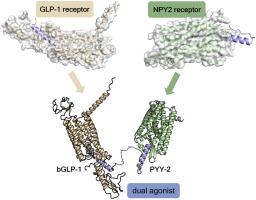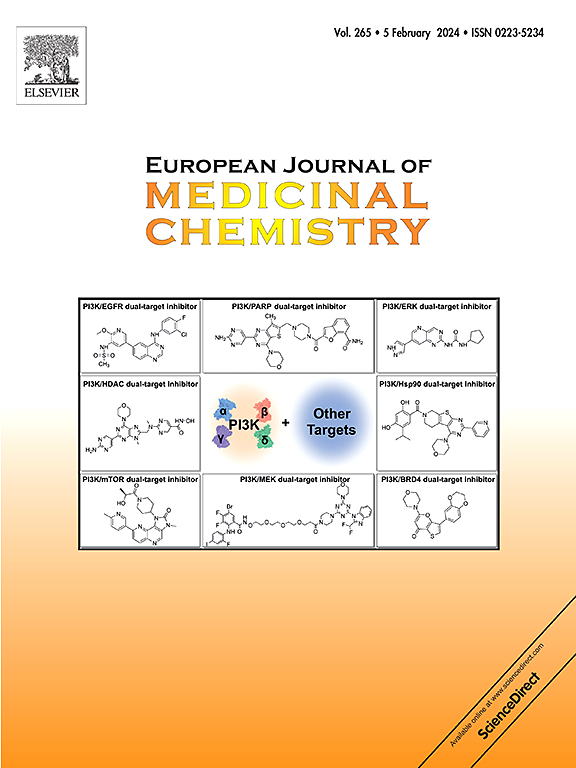Rational design of dual-agonist peptides targeting GLP-1 and NPY2 receptors for regulating glucose homeostasis and body weight with minimal nausea and emesis
IF 6
2区 医学
Q1 CHEMISTRY, MEDICINAL
引用次数: 0
Abstract
There is an urgent need for effective treatments targeting comorbidities of type 2 diabetes (T2DM) and obesity. Developing dual agonists of glucagon-like peptide 1 receptor (GLP-1R) and neuropeptide Y receptor type 2 (NPY2R) with combined PYY3-36 and GLP-1 bioactivity is promising. However, designing such dual agonists that effectively control glycemia and reduce weight while minimizing gastrointestinal side effects is challenging. In this study, we systematically evaluated the side effects induced by co-administering various GLP-1R agonists and PYY3-36 analogue. Our findings revealed that different GLP-1R agonist-PYY analogue combinations elicited gastrointestinal side effects of varying intensities. Among these, the co-administration of bullfrog GLP-1 analogue (bGLP-1) with PYY3-36 analogue resulted in lower gastrointestinal side effects. Thus, bGLP-1 was selected as the preferred candidate for designing dual GLP-1R/NPY2R agonists. Through stepwise structural design, optimization of linker arms, and durability enhancements, coupled with in vitro receptor screening, the novel peptide bGLP/PYY-19 emerged as the lead candidate. Notably, experimental results in mice and rats showed a significant reduction in emesis with bGLP/PYY-19 compared to semaglutide and bGLP-1 long-acting analogue (LAbGLP-1). Furthermore, bGLP/PYY-19 significantly outperformed semaglutide and LAbGLP-1 in reducing body weight in diet-induced obese (DIO) mice, without inducing nausea-associated behavior. These findings underscore the potential of dual-targeting single peptide conjugates as a promising strategy for developing glucoregulatory treatments that offer superior weight loss benefits and are better tolerated compared to treatments targeting GLP-1R alone.

求助全文
约1分钟内获得全文
求助全文
来源期刊
CiteScore
11.70
自引率
9.00%
发文量
863
审稿时长
29 days
期刊介绍:
The European Journal of Medicinal Chemistry is a global journal that publishes studies on all aspects of medicinal chemistry. It provides a medium for publication of original papers and also welcomes critical review papers.
A typical paper would report on the organic synthesis, characterization and pharmacological evaluation of compounds. Other topics of interest are drug design, QSAR, molecular modeling, drug-receptor interactions, molecular aspects of drug metabolism, prodrug synthesis and drug targeting. The journal expects manuscripts to present the rational for a study, provide insight into the design of compounds or understanding of mechanism, or clarify the targets.

 求助内容:
求助内容: 应助结果提醒方式:
应助结果提醒方式:


